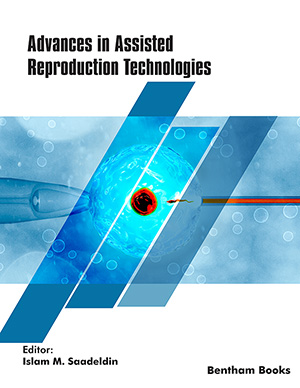
Abstract
Background: Oral squamous cell carcinoma (OSCC) is a common malignant tumor of the head and neck region known for its high metastatic and invasive potential. Chlorpromazine (CPZ) has been shown to inhibit the growth of oral cancer cells. However, the effects of CPZ on OSCC migration and its underlying molecular mechanisms remain unclear.
Objectives: We aimed to identify global protein changes and potential core proteins involved in CPZ-mediated inhibition of migration in SCC-15 cells using proteomics.
Methods: We assessed the effect of CPZ on SCC-15 using CCK-8 assays and wound healing experiments. Next, we performed LC-MS-based proteomic analysis to identify protein alterations in SCC-15 cells treated with CPZ at different times. Differential expression proteins (DEPs) were identified and subjected to bioinformatics analysis using GO, KEGG, and PPI tools. Key candidate proteins were selected and validated using the TCGA-HNSCC database and molecular docking.
Results: It was found that 20μm of CPZ had no effect on cell proliferation, but inhibited cell migration. A total of 4748 proteins were identified by Proteomics, among which 56 DEPs were identified, including 34 upregulated proteins and 22 downregulated proteins. Three proteins (RPF2, ACTB, and TGFBI) were identified as key candidate proteins associated with cell adhesion and migration in oral cancer cells.
Conclusion: CPZ may affect the expression of RPF2, ACTB, and TGFBI proteins and change the extracellular matrix and cell adhesion function, thus inhibiting the migration of SCC-15 cells. The results of this study provide a robust basis for further research on the molecular mechanism of CPZ to inhibit the migration of OSCC.
Keywords: Chlorpromazine, oral squamous cell carcinoma, proteomics, liquid chromatography-mass spectrometry, cell migration, molecular docking.
[http://dx.doi.org/10.12688/f1000research.22941.1] [PMID: 32399208]
[http://dx.doi.org/10.1080/21655979.2021.1932222] [PMID: 34098850]
[http://dx.doi.org/10.1007/s00262-020-02741-2] [PMID: 33104837]
[http://dx.doi.org/10.3390/jcm9092866] [PMID: 32899735]
[http://dx.doi.org/10.1016/j.ijom.2019.01.008] [PMID: 30738712]
[http://dx.doi.org/10.3390/cells11193131] [PMID: 36231093]
[http://dx.doi.org/10.1038/s41392-020-00213-8] [PMID: 32616710]
[http://dx.doi.org/10.1016/j.semcancer.2020.04.006] [PMID: 32380233]
[http://dx.doi.org/10.1186/s13046-020-1534-z] [PMID: 32005270]
[http://dx.doi.org/10.1016/j.bcp.2020.114403] [PMID: 33388284]
[http://dx.doi.org/10.1155/2018/5238760] [PMID: 29687002]
[http://dx.doi.org/10.1016/j.arcmed.2022.11.011] [PMID: 36460546]
[http://dx.doi.org/10.1038/s41467-019-09234-6] [PMID: 30944313]
[http://dx.doi.org/10.2174/1871520621666211015140455] [PMID: 34773964]
[http://dx.doi.org/10.1080/10673220802432350] [PMID: 18803105]
[http://dx.doi.org/10.1126/science.125.3241.233] [PMID: 13401229]
[PMID: 13573361]
[http://dx.doi.org/10.1038/181054a0] [PMID: 13493597]
[http://dx.doi.org/10.18632/oncotarget.17247] [PMID: 28455961]
[http://dx.doi.org/10.1016/j.neubiorev.2022.104809] [PMID: 35970416]
[http://dx.doi.org/10.1097/CAD.0b013e32832f567b] [PMID: 19584706]
[http://dx.doi.org/10.1021/acs.jproteome.1c00833] [PMID: 35363494]
[http://dx.doi.org/10.1186/s12014-020-09300-y] [PMID: 33292179]
[http://dx.doi.org/10.1038/s41467-020-17534-5] [PMID: 32719344]
[http://dx.doi.org/10.1101/gad.1569307] [PMID: 17938242]
[http://dx.doi.org/10.1016/j.bbrc.2022.01.090] [PMID: 35123266]
[http://dx.doi.org/10.1002/ajmg.a.62631] [PMID: 34970864]
[http://dx.doi.org/10.1016/j.cca.2012.12.012] [PMID: 23266771]
[http://dx.doi.org/10.3390/ijms21082746] [PMID: 32326615]
[http://dx.doi.org/10.1016/j.cellsig.2019.109479] [PMID: 31846694]
[http://dx.doi.org/10.1080/21655979.2021.1973220] [PMID: 34486492]
[http://dx.doi.org/10.1371/journal.pone.0146530] [PMID: 26745629]
[http://dx.doi.org/10.1016/j.cellsig.2021.110028] [PMID: 33940163]
[http://dx.doi.org/10.1038/s41419-020-2438-8] [PMID: 32312959]
[http://dx.doi.org/10.1159/000493293] [PMID: 30196284]
[http://dx.doi.org/10.1002/1878-0261.12828] [PMID: 33080107]
 21
21 5
5
























